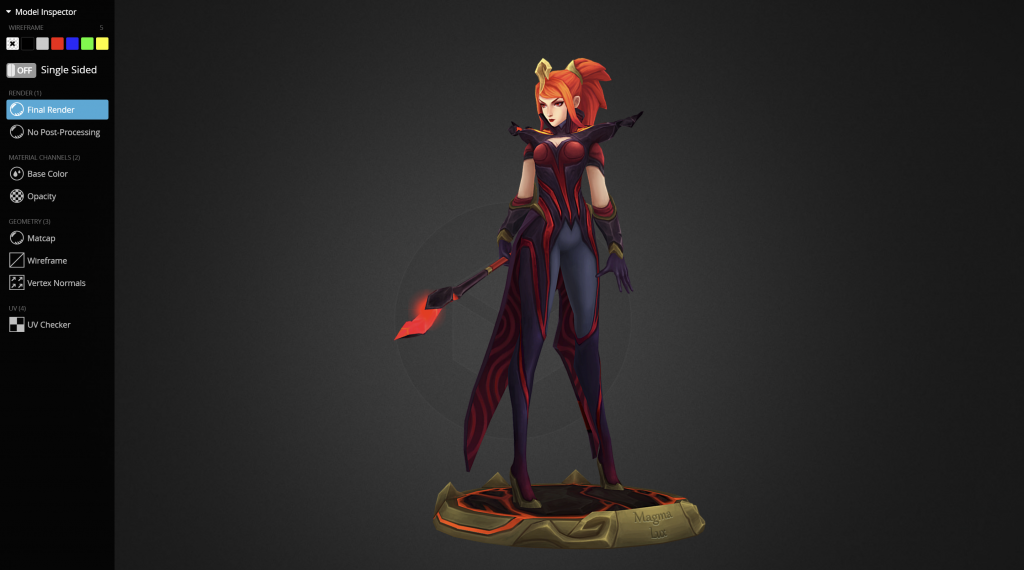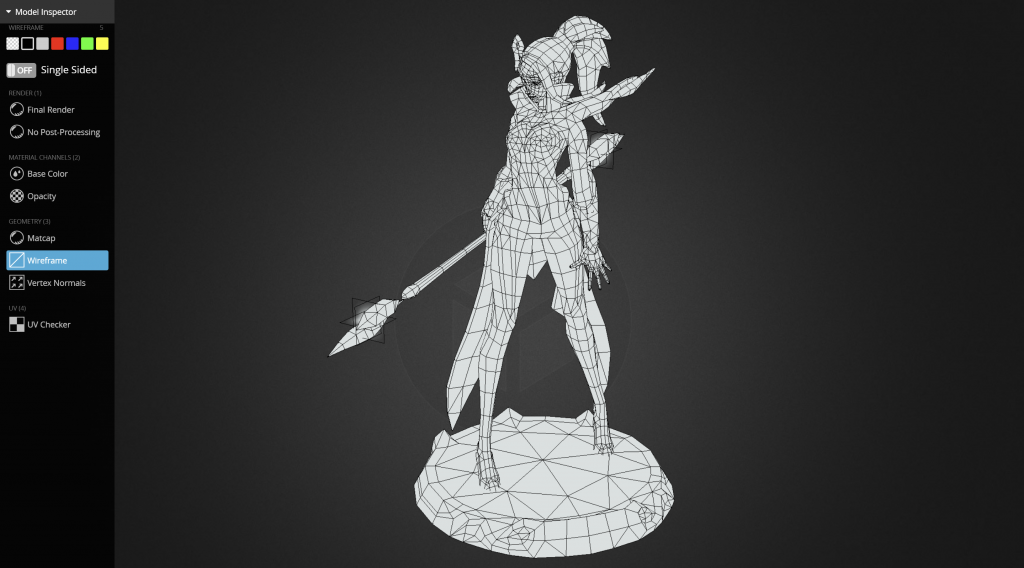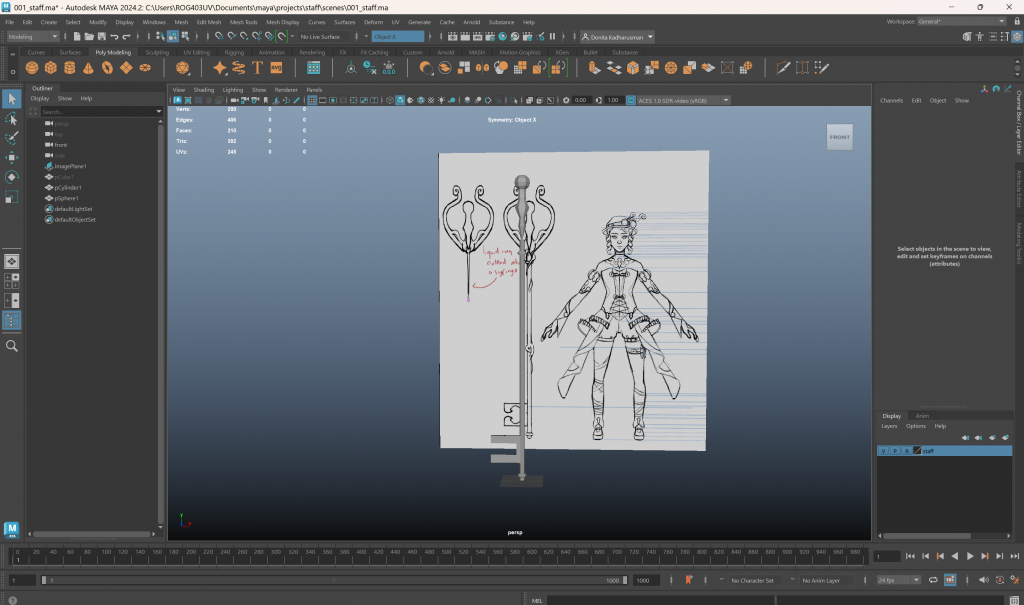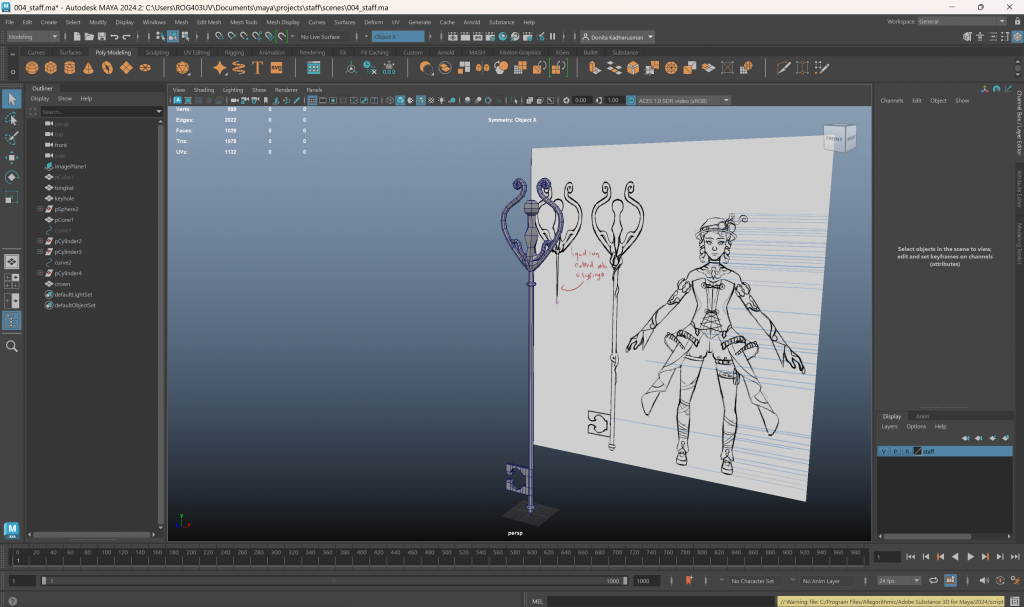5 – 11 May, 2025 — Donita Kadharusman
Games Art Pipeline 24/25
3D — Low Poly Game Char, Week 3
Box Modelling Exercise
The goal for this project is to make a 3D low-poly character from a singular cube (box modelling). Box modelling introduces the basic of modelling with low-poly to capture the overall shape and flow of the model, then working its way up to create a more refined higher-poly model. It is suggested from the start that we use real-world scale for the model, as it would be easier to have a scale benchmark for possible future assets.
Furthermore, human box modelling also challenges our anatomy understanding of human, by creating a visually and anatomically correct human through 3D.
A trick to create the right scale is to firstly use a cube for the height of the human to 180 cm (1 grid in Maya = 1 cm), then match the human blueprint to the cube benchmark. With that done, Amil guided through the whole process by creating a cube on the human’s waist before extruding and readjusting the width and height of the cubes to match the body’s shape (tools used: extrude, circularise for the neck and start of the arm, target weld to connect verts of shoulder and arm). We were also introduced to the symmetry and mirror tool to further check that the human is symmetrical (make sure the middle edge is straight in the middle by aligning the pivot point (D,V move and snap the pivot point to the middle of the model, X snap model on grids)).
(was not a good idea to jump straight into Maya without preparation / warm up after not touching it for 2-3 months, I forgot how to set projects or even put image planes. how sad. I should use it (also Zbrush) more often to hone my 3D skill and not forget about them. Because it can be beneficial for future Games Art years and industry, even if I end up in the 2D field, as it can help visualise objects in 3D and put it as 2D reference).


Monteon
Through week 1 presentation slides, I found that Monteon’s Lux Magma (2016) model quite helpful as a reference. I found that not every element within the characters need to be modeled in order to create a visually correct model (like the metal parts of the body or the skin tight suit), hence keeping it low-poly. However, it’s still recommended to define the base shapes of the outfit (where the sleeves ends, the suit start, folds, etc.), to create an accurate angle of the clothing and accessories with depth. Because of how detailed my character is, I’d want to bare this technique in mind so I wouldn’t exceed the poly limit (20,000 tris or 10,000 quads).
Also, I need to bare in mind that it is okay to have separate meshes within the model as it can be pinned to the model during rigging and animating. For example like Lux Magma’s (2016) floating metal accessory on her forehead.


Character Box Modelling
Followed along Amil’s class recording to create Eleanor’s upper body box model. And I realised along the way that the difference between stylised male and female body model is that the female body model has more curve, making it has an hourglass shape, while the male body model has broader shoulder and rectangular-ish look. These concepts make stylised characters exaggerate their femininity or masculinity. However, the basic topology of both low poly characters is still the same.


Weapon Modelling
By using a real world scale benchmark, I could easily set up the height of Eleanor’s weapon’s model. By using the knowledge of my previous human box modelling and project (Principles of Games Art), I reapplied the tools ive learnt into this model. Using the EP curve tool to make curves, mirror tool to create symmetries, and circularise also target weld tool for the circular and connection to the bow of the key (see picture 2 and 3).
I improvised the weapon model from the concept art as the wiggly lines (that is where the chemical streams) take too many polys, yet I’d still want to implement this idea to the model for harmony, hence coming up with the final model (see the selected model on picture 4). Moreover, I created 4 different models, varying from lower to higher quads, just in case that Eleanor’s 3D model turned out to have higher poly.




Bibliography
Monteon, O. (2016) ‘Lux Magma’ [Artstation]. 20 December. Available at: https://www.artstation.com/artwork/ReOaX (Accessed: 21 April 2025).
